


QUBIT AI: Paul Gründorfer & Leonhard Peschta
The Sea
FILE 2024 | Installations
International Electronic Language Festival
The Sea is an extraction of a complex natural phenomenon, resulting in an artificial emulation that develops a life form of its own. Just like the sea with its endless waves, this artificial system follows the impact of an immersive state, leading to a unique vision of an artificial generator. Despite appearing chaotic, it is capable of generating associations ranging from the movement of waves to science fiction scenarios.
Bio
Paul Gründorfer develops process-related systems and explores variable or unstable conditions in the occurrence of sound when exposed to amplification, feedback, and multiple signal streams. His works focus on processes that evolve in a social space. Leo Peschta is an artist and researcher. During his studies, he worked in various fields of media arts, including sound, installations and software, developing over the years a special interest in robotics and machinery.
Credits
Austrian Embassy

Sara Sadik
Ultimate Vatos
Les vidéos, performances, installations et photographies de Sara Sadik prennent la forme de mangas, de jeux vidéo, de docu-fictions ainsi que de films d’animation CGI. Ce faisant, l’artiste aux racines maroco-algériennes explore les manifestations de ce qu’elle appelle « Beurcore« – la culture des jeunes qui a émergé parmi les membres de la classe ouvrière de la diaspora nord-africaine. Beurcore définit à la fois une identité hybride et un mouvement collectif constitué à travers la musique comme le rap et le hip-hop, la langue, la mode, des symboles spécifiques et les médias sociaux.

Brodbeck & de Barbuat
Les 1000 vies d’Isis
Les 1000 vies d’Isis (The 1000 lives of Isis) highlights the birth of an imaginary character created entirely by computer. A virtual identity whose daily life is imagined in images. The fictitious staging of these moments photographed in the South of France interrogates Photography and Portraiture by introducing a questioning on the nature of images, their link to reality and to the identity of the living.

Nix Liu Xin
Three Supermarkets
Three Supermarkets is an infinite loop film with a shopping cart riding across multiple coexisting fictional supermarkets. As the first episode of the Phygital Supermarket Trilogy, this film explores the hybrid compositing of the emerging physical and digital media and techniques. The production process of this film uses industrial-grade six-axis Staubli robot arm as shooting equipment, green screen shooting, volumetric video capture, photogrammetry, Cinema 4D Mograph, Redshift shading & rendering, 2D/3D compositing, and other custom build techniques and workflows. Familiar but neglected objects, such as apples and snack bags, were scanned as either static models or animated model sequences from the physical world to the digital space.

INES ALPHA
Ines Alpha likes blurring the frontiers between reality and fiction. And by being a 3D makeup artist she makes reality more fantastic and surreal.
.
Ines Alpha 喜欢模糊现实与虚构之间的界限。作为一名 3D 化妆师,她让现实变得更加梦幻和超现实。
.
Ines Alpha는 현실과 허구의 경계를 모호하게 만드는 것을 좋아합니다. 그리고 그녀는 3D 메이크업 아티스트가 됨으로써 현실을 더욱 환상적이고 초현실적으로 만듭니다.

zach blas
sanctum
Zach Blas(United States、1981)の作品は、テクノクラート社会の限界と基盤を描くことを目的として、視覚言語の慣習、価値体系、デジタル技術に内在する力のダイナミクスをさまざまな文脈で分析、調査、配置しています。 。 彼の分析とデジタル文化への反映のために、彼は映画、彫刻、執筆、パフォーマンスなど、さまざまな表現形式を使用しています。 ブラスはブラックユーモアと理論的研究に取り組んでおり、彼の最も顕著な影響の中には、神秘主義の伝統、サイエンスフィクションのジャンル、ポップカルチャー、クィアの美学があります。
.
sanctum
The work of Zach Blas (United States, 1981) analyzes and explores the dynamics of visual language practices, value systems, and the forces inherent in digital technology in a variety of contexts, with the aim of depicting the limits and foundations of technocratic societies. I have placed it. .. For his analysis and reflection in digital culture, he uses a variety of forms of expression, including film, sculpture, writing and performance. Brass works on black humor and theoretical research, and among his most prominent influences are the mystical tradition, the genre of science fiction, pop culture, and the aesthetics of queer.

Liam Young
Planet City
Planet City, by Los Angeles-based film director and architect Liam Young, explores the productive potential of extreme densification, where 10 billion people surrender the rest of the planet to a global wilderness. Although wildly provocative, Planet City eschews the techno-utopian fantasy of designing a new world order. This is not a neo-colonial masterplan to be imposed from a singular seat of power. It is a work of critical architecture – a speculative fiction grounded in statistical analysis, research and traditional knowledge.
It is a collaborative work of multiple voices and cultures supported by an international team of acclaimed environmental scientists, theorists and advisors. In Planet City we see that climate change is no longer a technological problem, but rather an ideological one, rooted in culture and politics.

Denis Villeneuve
“Arrival’s narrative plays out in four languages: English, Mandarin, Russian and Heptapod. Though they are not spoken in the film, we learn that Louise is also fluent in Farsi, Sanskrit and Portuguese (and possibly others). The language learning process and the growing translingual bond between Louise and the heptapods forms the film’s narrative arc and the majority of its plot. Thus language, and specifically the mechanics of ←215 | 216→multilingualism, is Arrival’s central theme. Within this context, the ability to communicate across language barriers is an asset, and the flexibility to navigate new linguistic challenges is invaluable. The heptapods are pure science fiction, but serve a powerful metaphorical function. As Emily Alder (2016) writes in The Conversation, “ultimately, Arrival is less about communicating with the aliens than with each other – internationally but also individually […] The film’s message is that difference is not about body shape or colour but language, culture and ways of thinking. It’s not about erasing that difference but communicating through it”. Gemma King
.
语言学习过程以及路易丝与七足动物之间越来越多的跨语言联系形成了电影的叙事弧线和大部分情节。 因此,语言,尤其是←215的机制| 216→使用多种语言是到达中心的主题
.
Процесс изучения языка и растущая межъязыковая связь между Луизой и гептаподами составляют повествовательную дугу фильма и большую часть его сюжета. Таким образом, язык и, в частности, механика ← 215 | 216 → многоязычие – центральная тема Арривала.
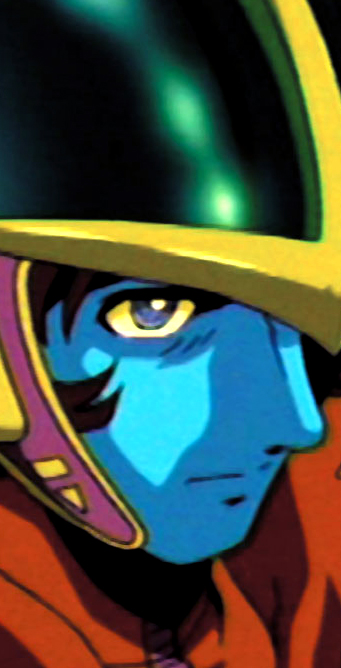
Daft Punk
Interstella 5555
Daft Punk’s Interstella 5555: The 5tory of the 5ecret 5tar 5ystem is a 2003 Japanese-French animated science fiction film and the visual realization of Discovery, the second studio album by Daft Punk. Interstella 5555 tells the story of the abduction of an interstellar pop band. The film was produced by Daft Punk, Cédric Hervet and Emmanuel de Buretel with Toei Animation under the supervision of Leiji Matsumoto. The film has no dialogue and uses minimal sound effects.
cinema full

Walid Raad
The Atlas Group
In the late 1990s Raad created a fictional foundation called The Atlas Group in order to accommodate and contextualise his growing output of works documenting the Lebanese Civil Wars, generally dated 1975–1990. Within Atlas Group Raad produces artworks, addressing the infrastructural, societal, and psychic devastation wrought by the wars, which he then re-dates and attributes to an array of invented figures who in turn are said to have donated these works directly or by proxy to The Atlas Group archive. Regardless of original medium of the documents, Raad processes and outputs all of his work digitally consciously adding another layer of documentary intervention to his overarching fictional conceit.

NAXS CORP
Geist Rendern
RENDER GHOST ist eine kombinierte immersive Theaterarbeit aus virtueller Realität, die vom New Media Art Team NAXS CORP erstellt wurde. Die sechs teilnehmenden Zuschauer werden weiße, staubfreie Kleidung anziehen, und das Servicepersonal wird dabei helfen, Virtual-Reality-Ausrüstung zu tragen und langsam das weiße aufblasbare Zelt zu betreten. Angeführt von der virtuellen Szene werden sie um den Spiralturm herumgehen, um eine physische zu starten Science-Fiction-Zeremonie. Wenn der Betrachter auf die Spitze des Turms tritt, entfernt er seine Virtual-Reality-Ausrüstung und taucht in eine surreale Landschaft ein, die aus Lichtern, Lasern, Rauch, Geräuschen, schwebenden Partikeln und Wind besteht. Allmählich geriet er in Trance und Blitz Nebel.

Nicolas Sassoon and Rick Silva
Signals
SIGNALS is a collaborative project by artists Nicolas Sassoon and Rick Silva that focuses on immersive audio-visual renderings of altered seascapes. Sassoon and Silva share an ongoing theme in their individual practices; the depiction of wilderness and natural forms through computer imaging. Created by merging their respective fields of visual research, SIGNALS features oceanic panoramas inhabited by unnatural substances and enigmatic structures. The project draws from sources such as oceanographic surveys, climate studies and science-fiction to create 3D generated video works and installations that reflect on contamination, mutation and future ecologies.
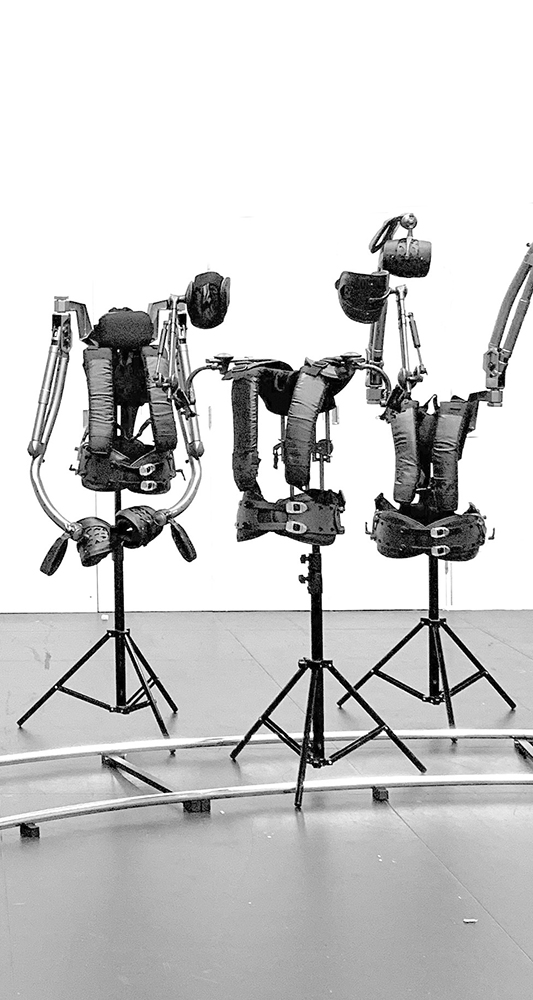
Louis-Philippe Demers
Repeat
In the midst of the promises and fears surrounding robots and Artificial Intelligence, especially in the manual labour sector, Repeat attempts to imagine the illusory dance moves of the so-called augmented body tainted with the gender stereotypes of human ballet duets. Repeat shifts the performing body of the assembly line into the performing body onstage, unceasingly carrying out its tasks. The body meshed with the industrial exoskeleton tolerates and sustains strenuous tasks but ironically, it enables those actions to be repeated even more. Repeat uses passive industrial exoskeletons that are currently deployed in the workplace. This ain’t no fiction, this is the future promised to the human worker.
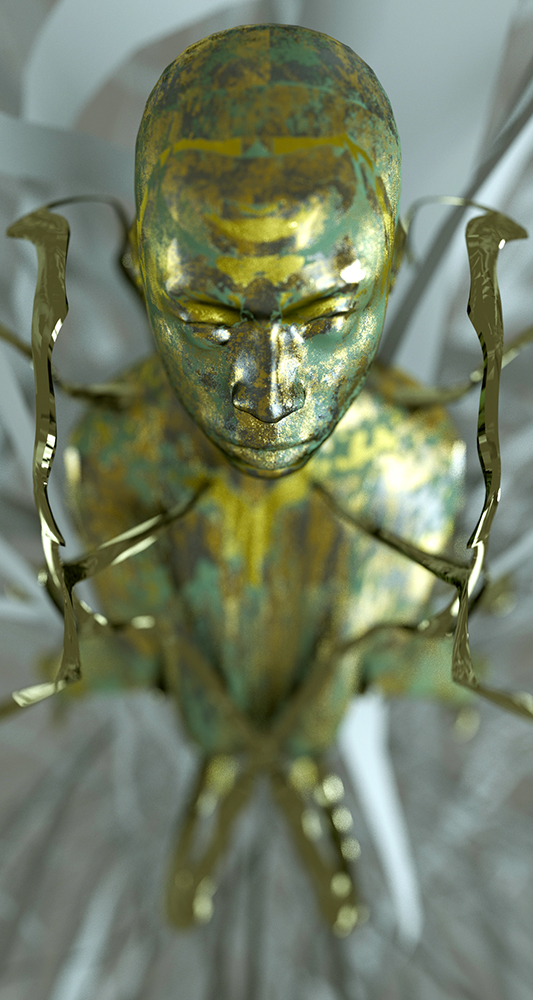
Keiken + George Jasper Stone
Feel My Metaverse
Feel My Metaverse is Keiken’s first venture in creating a cinematic film, using game engines to build a fictional future, wanting to create stories that viewers can collectively believe in. “I normally make CGI animation from Cinema 4D, often taking days and weeks just to produce short sequences or footage. Whereas working with game engines, we could generate landscapes or worlds that we can continually build onto collectively to produce larger scale works”. The film, set in a future when climate crisis has rendered Earth inhabitable, explores the daily lives of three characters and their experiences in the multiple realities – Pome Sector (a corporate wellness world), 068 (a roleplaying VR world), and Base Reality, or what we currently know as earth. The characters navigate the challenging landscape in the world’s unforgiving points system. Keiken’s goals of unlearning norms of the current world is included in one of these realities.
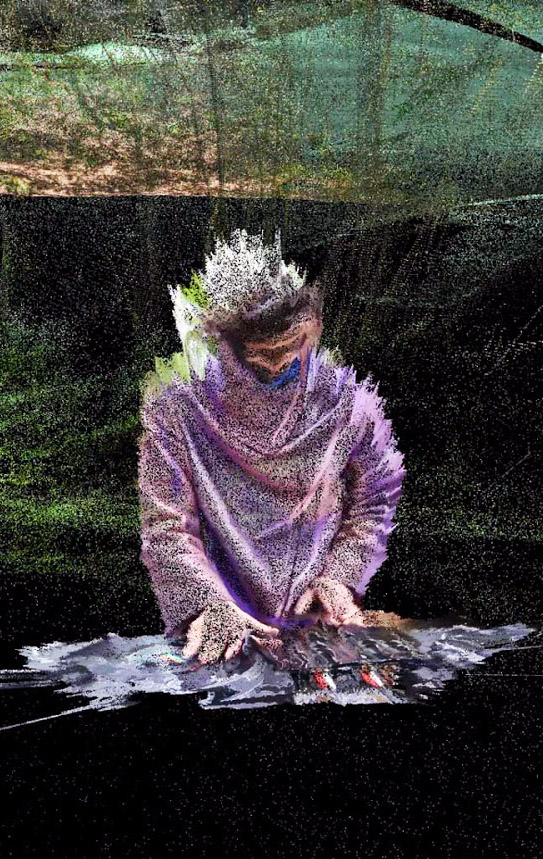
Liam Young
Where the City Can’t See
Directed by speculative architect Liam Young and written by fiction author Tim Maughan, ‘Where the City Can’t See’ is the world’s first narrative fiction film shot entirely with laser scanners, designed in collaboration with Alexey Marfin. The computer vision systems of driverless cars google maps, urban management systems and CCTV surveillance are now fundamentally reshaping urban experience and the cultures of our city. Set in the Chinese owned and controlled Detroit Economic Zone (DEZ) and shot using the same scanning technologies used in autonomous vehicles, we see this near future city through the eyes of the robots that manage it. Exploring the subcultures that emerge from these new technologies the film follows a group of young car factory workers across a single night, as they drift through the smart city point clouds in a driverless taxi, searching for a place they know exists but that the map doesn’t show.

Projet EVA
The Object of the Internet
L’Objet de l’Internet est une installation jouant le rôle d’un mausolée destiné à la Fin du web, Grâce à des procédés optiques et cinétiques placés dans une boîte fermée où le visiteur insère sa tête, le visage humain est décomposé en une multitudes de fragments. Les visiteurs deviennent les sujets d’une fiction dystopique post-humaine où, sur les réseaux sociaux, ne demeureraient sous la forme d’une résonance que les traces de quelques égo-portraits encore artificiellement animés. Ces derniers, condamnés au statut de solipsismes stériles, s’agiteraient dans le vide sidéral de la fin d’Internet.

ROBOTICS
ROBOTICS
Robotics is the art and commerce of robots, their design, manufacture, application, and practical use. Robots will soon be everywhere, in our home and at work. They will change the way we live. This will raise many philosophical, social, and political questions that will have to be answered. In science fiction, robots become so intelligent that they decide to take over the world because humans are deemed inferior. In real life, however, they might not choose to do that. Robots might follow rules such as Asimov’s Three Laws of Robotics, that will prevent them from doing so. When the Singularity happens, robots will be indistinguishable from human beings and some people may become Cyborgs: half man and half machine.

Bahar Yürükoğlu
Flow Through
“Flow Through takes as its departure point Bahar Yürükoğlu’s experiences during her travels to the Arctic Circle in 2015, both in the summertime, when the sun doesn’t set, and during the winter months, when darkness prevails. In the exhibition, the artist creates fictional spaces based on the dualities she observed in the Arctic region; blurring the boundaries between presence and absence, past and future, nature and civilisation, as well as cyclical movements and inevitable transformations, these installations, photographs and videos test the viewer’s perceptive capacities, and demand that the dichotomy between the subject and the object is set aside”. Duygu Demir

Jonas Pequeno
Foley
Huxley-Parlour gallery presents a solo exhibition of new audiovisual and installation works by the London-based artist Jonas Pequeno. Comprising of three works, a kinetic sound installation Foley, a CGI video Ocean Scene Composite and a photographing print, and the act of appearing, the exhibition considers incongruity in digital fictional constructs. The title of the exhibition, /ˈfəʊli/, is a phonetic transcription of the word foley, a film-making technique used to manually mimic everyday sound effects in post-production when props do not acoustically match their real life counterparts. Influenced by the concept of foley, Pequeno’s work features an audiovisual installation that incorporates microphones and balloons swayed by a fan, replicating the sound of crashing ocean waves.


Jennifer Steinkamp
EON
“I considered the first life forms on Earth and how we came to be as a way to refer to the Natural Sciences. I looked at fossil records of the first multi cellular organisms of the Ediacaran Period, 555 million years ago for inspiration. I was struck by the theory of symbiosis in evolution; our DNA ancestors are the resultant fusion of single cellular organisms and bacteria. The millions of bacteria in our bodies are our foremothers. EON is a speculative fiction, a depiction of early life forms underwater. The Universe was formed 13.7 billion years ago. The Earth is 4.543 billion years old. Cyanobacteria or blue-green algae were the first microbes to create oxygen on Earth via photosynthesis 3.5 billion years ago. First humans 200,000-300,000 years ago.” Jennifer Steinkamp

Diana Thater
“Science,Fiction”
Through a combination of the temporal qualities of video and the architectural dimension of its physical installation, Thater’s work explores the artifice of its own production and its capacity to construct perception and shape the way we think about the world through its image. Natural diversity, wildlife, and conservation have been persistent themes in the artist’s work, and she has dedicated herself to an examination of the varied kinds of relationships humans have constructed with animals. While her in-depth studies of ecosystems and animal behavior propose observation as a kind of understanding in itself, her ethical position is implicit in the work, which, while subtly political, provides views of the sublime in all its incarnations—stunning, beautiful, and simultaneously terrifying.
Adrien M / Claire B et Mourad Merzouk
Pixel
A Small tease of the hour long presentation Intertwining body movement with technology is no easy feat. The Dance show is 11 dancers in a virtual and living visual environment. It took the collaborative artistic efforts of artists Adrien Mondot, Claire Bardainne from Adrien M/Claire B Company and Mourad Merzouk from his dance company Käfig to bring to life Pixels. A work on illusion combining energy and poetry, fiction and technical achievement, hip hop and circus.

Tod Machover
Death and the Powers
Science fiction and poignant family drama combine in one of the most stunning, cutting-edge operas of the 21st century, with a libretto by former Poet Laureate Robert Pinsky, coming to the stage of the Winspear Opera House in a production directed by Diane Paulus, designed by Alex McDowell (Steven Spielberg’s Minority Report) and conducted by Nicole Paiement (TDO’s The Lighthouse).This visually spectacular robot pageant by MIT Media Lab’s Tod Machover tells the story of a terminally ill billionaire, sung by Robert Orth, who downloads his consciousness into “the System” and proceeds to use all his powers to persuade his loved ones to join him there. Without bodies, without the possibility of touch, sex, suffering, and death — are we still genuinely human?Explore these existential questions and much more in a piece Variety described as “playful, lyrical and…mesmerizing.” Also starring Joélle Harvey as Miranda, Patricia Risley as Evvy, and Hal Cazalet in his Dallas Opera debut as Nicholas.

ALICE HALDENWANG, LAURA COUTO ROSADO AND TINGTING ZHANG
Telepathy 2012-2112
“TELEPATHY” immerses the viewer in the heart of a fiction where telepathy would become the predominant means of communication at the expense of means of current communication. The ten glass helmets enable to visualize a telepathic communication, by definition invisible. “TELEPATHY” proposes to reverse the current trend which consists in basing its communication on technology, and in exchange it reveals the parapsychological and subjective communication of psychic phenomena.

MICHAEL BURTON
Astronomical Bodies
Astronomical Bodies is based on the research of Dr. Terence Kee of the University of Leeds. He proposes that that a reactive form of phosphorus arrived on the early Earth via meteorite impacts. His research found that phosphorus from space was more suitable for the chemical reactions to develop complex life. Astronomical Bodies reverses this process and tries to transform phosphorus harvested from the body — in the form of kidney stones and urine — into manmade meteorites. Rather than the traditional idea of transpermia addressed in a host of science fiction writings and films, Astronomical Bodies proposes that the galactic transferal of life-promoting chemicals is a natural process that we can facilitate.

SAÂDANE AFIF
Tête de mort
Tête de mort pourrait être une scène de concert, qui attend son performeur, la scénographie d’un spectacle, d’une comédie musicale, le scénario symbolique d’un rêve. Les grosses bulles métalliques, connotant l’éphémère (de la vie, de la fête) et l’étrangeté (du rêve ou de la fiction), attirent l’œil comme un appât, un miroir aux alouettes.
Le pavement géométrique du plafond contient l’anamorphose à l’envers, dont le motif « tête de mort » ne se révèle au regardeur que dans le reflet des boules miroir, selon un certain point de vue.

echophon
Yancy Way
The Wonderfdul Hypnotic Gifs of echophon: Yancy Way is an artist making design-influenced generative art that explores motion & the interaction of shapes & line. Ephemeral themes of minimalism, science fiction & nature.
gif


LAURIE SIMMONS
劳丽西蒙斯
ローリー·シモンズ
로리 시몬스
ЛОРИ СИММОНС
DOLL
SIMMONS HAS LONG INVESTIGATED HUMAN PERFORMANCE AS IT RELATES TO SPECIFIC ENVIRONMENTS THROUGH A DEEP DOCUMENTATION AND PROFOUND CHOREOGRAPHY OF DOLLS AND OBJECTS IN AND ON A STAGE. THE BOUNDARIES BETWEEN FICTION AND REALITY ARE OFTEN BLURRED, AND THE ARTIST’S TABLEAUS ARE EVOCATIVE OF A SINCERE HUMANITY, EMOTION AND CHARACTER.

Birch Cooper
Electric Objects
“Inspired by the multidimensional universe in Greg Egan’s 1997 hard science fiction classic, Diaspora, Birch erected a series of virtual sculptures within hyper-reflective and futuristic environments.”

ANDREW HIERONYMI
move
File Festival
MOVE is an interactive installation divided into six distinct modules, JUMP, AVOID, CHASE, THROW, HIDE and COLLECT. Each module offers a single-user interaction, based on a verb corresponding to the action the participant is invited to perform. Each verb corresponds to a common procedure acted out by avatars during videogame play. Each module offers an interaction with abstracted shapes (circles, rectangles) behaving according to simplified rules of physics (collision, friction). Each module is color-coded with consistency, where the color red is used for the graphical element that poses the core challenge. Each module increases difficulty in a similar linear manner.What makes MOVE unusual is that unlike most computer vision or sensor based games like Eye-toy or Dance Dance Revolution, the participant IS the avatar, he is not seeing a representation of herself or an indirect result of her actions on a separate screen but instead interacts directly with the projected graphical constituents of the game. Because those graphical elements are non-representational they do not allow for a projection in a fictional space. The combination of abstracted shapes and direct interaction reinforces in the player the focus on the action itself (JUMP, AVOID, CHASE, THROW, HIDE or COLLECT) instead of an ulterior goal.

Marguerite Humeau
Echoes
Marguerite Humeau’s design is used to explore the means by which knowledge is generated in the absence of evidence, or in the impossibility of either reaching or analysing the object of investigation. Humeau weaves factual events into speculative narratives, therefore enabling the unknown to erupt in grandiose splendour. The work is presented as a series of live science fictions: semi-real, synthetic, supernatural events.

MIAO XIAOCHUN
МЯО СЯОЧУНЬ
缪晓春
مياو شياو تشون
last judgment in cyberspace (detail)
Printed in black and white. Miao’s photos conceive the celestial as a silvery futuristic tableau that’s enchantingly serene and threateningly industrial. In combining the sublime awe of religious painting with malevolent science fiction theme, Miao uses photography to engage the viewer in an ultra-modern way. In using digital process to create his subject ‘from scratch’, Miao’s photographs authenticate a virtual world rather than document reality. Similar to video game graphics and ‘screen shots’, Miao’s images involve the viewer by casting them as ‘avatars’ within the action.

Alex Lysakowski
Antistructure
L’artiste visuel canadien s’approprie le réel en lui donnant des aspects grandiose et grotesque. Dans sa récente série «Antistructure», Alex Lysakowski basé à Mississauga, au Canada, nous propose de découvrir des bâtiments industriels, des automobiles, mais aussi des monuments devenus invraisemblables grâce à la magie de la retouche photo. «Je crée des images avec des interactions structurelles surréalistes et étranges au sein de paysages banals. J’évite ainsi un espace de transition entre la réalité et la fiction, tout en conservant le réalisme dans l’atmosphère de l’image», indique-t-il.

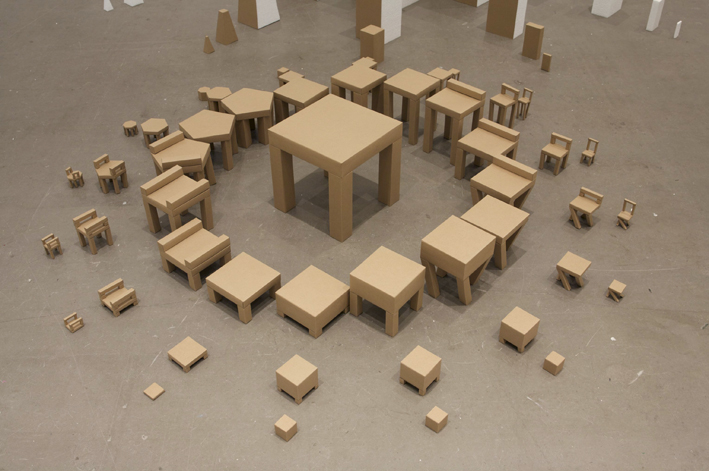
TOMMY STØCKEL
Art of Tomorrow
My sculptures and installations are based upon fiction and speculations. The works are often visual “what-if?” scenarios mixing up ideas of pasts and futures, where sculptures (or whole exhibitions) are imagines to be either in states of artificial decay; still unfinished or even yet to be made in some undefined future. Often, the works are constructed from simple materials, which gives the objects a feeling of being temporary models or props.

KYUIN SHIM
Korean artist Kyuin Shim creates work that your pupils will interpret as a straight up science fiction novel. One body of work in particular, “Black Black,” is a series of gruesome depictions of black mannequin bodies gone haywire. As a digital artist and sculptor, he works compiling 3D renderings of real images. These sculptures, with the glossy stature of high fashion, the black mannequins are enrobed in large blisters. In varying states of vulnerability, his sculptures are suffering implosion and meltdown; a person who has ripped his head off gives himself fellatio, another is on his hands and knees, expelling their entire insides.
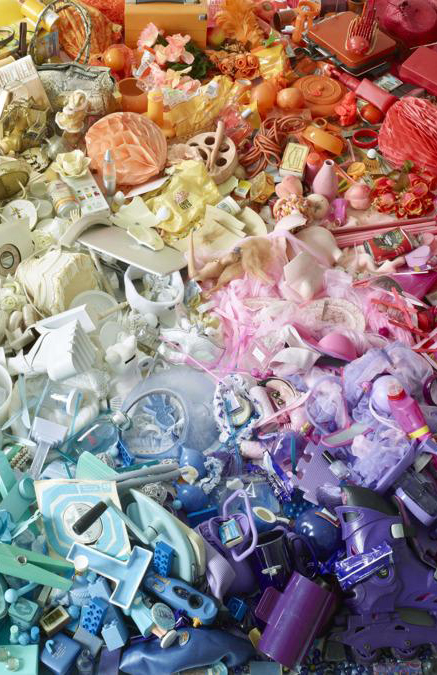
dan tobin smith
丹·托宾·史密斯
댄 토빈 스미스
дан Тобин Смит
color-codes kipple
The work references the fictional concept of ‘kipple’, as described by science fiction writer philip k dick’s 1968 novel ‘do androids dream of electric sheep’, later adapted into the film ‘blade runner’. ‘Kipple is useless objects, like junk mail or match folders after you use the last match or gum wrappers or yesterday’s newspaper. When nobody’s around, kipple reproduces itself…the entire universe is moving towards a final state of total, absolute kippleization.[…]
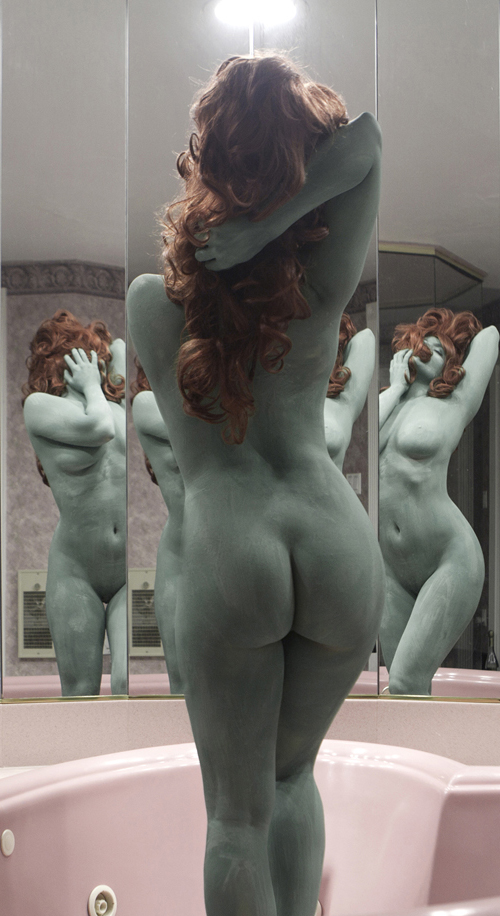
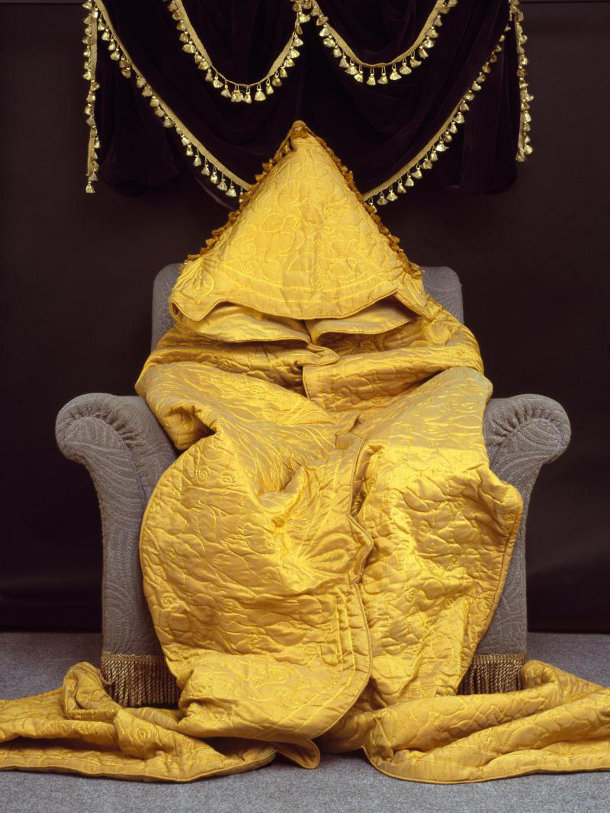
Patty Carroll
ПАТТИ КЭРРОЛЛ
帕蒂·卡罗尔
Anonymous Women: Draped
Empress
“Photographers observe, comment, criticize, and make fun of the worlds we live in by interacting with reality, and visibly displaying those perceptions in images. My training was as a straight, documentary photographer, but I stray back into the studio to make up fictional worlds.”

Jean-François Brun, Dominique Pasqualini and Philippe Thomas
INFORMATION FICTION PUBLICITÉ (IFP)
De temps à autre
Le MAC/VAL donne à son tour un éclairage inédit sur IFP, en parfaite association avec les artistes, Jean-François Brun et Dominique Pasqualini et en misant sur une très forte documentation. Si l’exposition ne présente pas de nouvelles pièces – et pour cause, les activités de l’agence cessent en 1994 –, elle associe volontairement les deux protagonistes à son élaboration même, avec la volonté de réactiver, réactualiser, voire même «amplifier» certaines œuvres emblématiques comme les images de ciels nuageux, les bâches, les caissons lumineux ou autres plots, en plaçant le visiteur au centre du processus.

Philipp Schaerer
ФИЛИПП ШЕЕРЕР
Digital Bildbau No 02
The series of images with the title “Bildbauten“ deals with the effect and the claim to credibility of images of architecture that appear to be photographs. Frontal views of fictional architectures serve as an example. By means of their exaggerated and orchestrated way of representation, they model themselves on the object- like appearance and the formal language of contemporary architecture in a rather ironic way.

LAURIE SIMMONS
劳丽西蒙斯
ローリー·シモンズ
로리 시몬스
ЛОРИ СИММОНС
Blue Geisha Lying on Bed
Simmons has long investigated human performance as it relates to specific environments through a deep documentation and profound choreography of dolls and objects in and on a stage. The boundaries between fiction and reality are often blurred, and the artist’s tableaus are evocative of a sincere humanity, emotion and character.

Philippe Druillet
BD
Philippe Druillet ist ein französischer Comiczeichner und -schöpfer sowie ein Innovator im Bereich visuelles Design. Druillet wurde in Toulouse, Haute-Garonne, Frankreich, geboren, verbrachte seine Jugend jedoch in Spanien und kehrte 1952 nach dem Tod seines Vaters nach Frankreich zurück. Als Science-Fiction- und Comic-Fan arbeitete Philippe nach dem Abitur als Fotograf und zeichnete nur zu seinem eigenen Vergnügen. Sein erstes Buch erschien 1966 mit dem Titel Le Mystère des abîmes (Das Geheimnis des Abgrunds). Es stellte seinen wiederkehrenden Helden Lone Sloane vor und spielte mit Science-Fiction-Themen, die teilweise von seinen Lieblingsautoren H. P. Lovecraft und A. E. van Vogt inspiriert waren. Später schuf Druillet Buchcover für Neuveröffentlichungen von Lovecrafts Werken sowie zahlreiche Filmplakate. Nachdem Druillet 1970 regelmäßig Beiträge für das französisch-belgische Comic-Magazin Pilote verfasste, wurde seine Lone Sloane-Saga immer extravaganter, da er Innovationen wie kühne Seitendesigns und computergenerierte Bilder verfolgte.

Sabrina Ratté
Waterfall
Sabrina Ratté est une artiste vidéo établie à Montréal. Son travail est caractérisé par la création d’environnements virtuels générés par des signaux électroniques. L’électricité, comme matériel brute, est sculptée, manipulée et altérée numériquement pour renaître en une architecture vibrante et lumineuse. Ses oeuvres se situent à la limite de la science-fiction, à mi-chemin entre l’abstraction et le figuratif, l’utopie et la dystopie, l’architecture et le paysage. Elle travaille avec les divers aspects de la vidéo, tels que l’installation, le GIF animé, l’impression et la performance live.

LAURIE SIMMONS
劳丽西蒙斯
ローリー·シモンズ
로리 시몬스
ЛОРИ СИММОНС
SIMMONS HAS LONG INVESTIGATED HUMAN PERFORMANCE AS IT RELATES TO SPECIFIC ENVIRONMENTS THROUGH A DEEP DOCUMENTATION AND PROFOUND CHOREOGRAPHY OF DOLLS AND OBJECTS IN AND ON A STAGE. THE BOUNDARIES BETWEEN FICTION AND REALITY ARE OFTEN BLURRED, AND THE ARTIST’S TABLEAUS ARE EVOCATIVE OF A SINCERE HUMANITY, EMOTION AND CHARACTER.

LAURIE SIMMONS
劳丽西蒙斯
ローリー·シモンズ
로리 시몬스
ЛОРИ СИММОНС
SIMMONS HAS LONG INVESTIGATED HUMAN PERFORMANCE AS IT RELATES TO SPECIFIC ENVIRONMENTS THROUGH A DEEP DOCUMENTATION AND PROFOUND CHOREOGRAPHY OF DOLLS AND OBJECTS IN AND ON A STAGE. THE BOUNDARIES BETWEEN FICTION AND REALITY ARE OFTEN BLURRED, AND THE ARTIST’S TABLEAUS ARE EVOCATIVE OF A SINCERE HUMANITY, EMOTION AND CHARACTER.

Sonja Baumel
crocheted membrane
‘Crocheted Membrane’ experiments with creating a momentary fiction through fashion artifacts. Starting with the physical needs of one individual human body in an outdoor temperature of 10 degrees Celsius, seven hand-crocheted body forms were produced. The clothing’s texture got thinner or opened up completely on areas of the body that needed less warmth and were thicker where warmth was lacking. In this way, a fundamental change in the aesthetic and function of clothes was displayed. Fixed forms, such as trousers, were recreated into new, unique body forms. Instead of one uniform surface, the textures became alive and inimitable. “Her concept of clothing does not derive in the same way as most fashion design, from shape or historically patterned form with embedded social hierarchy and material richness, but is instead determined by the needs and sensations of the human body – performing in the same way that bacteria populations individually respond.” (Villeré 2014) The resulting fictional artifacts illustrate how we could use knowledge about our unique bacteria population to create a novel layer.

